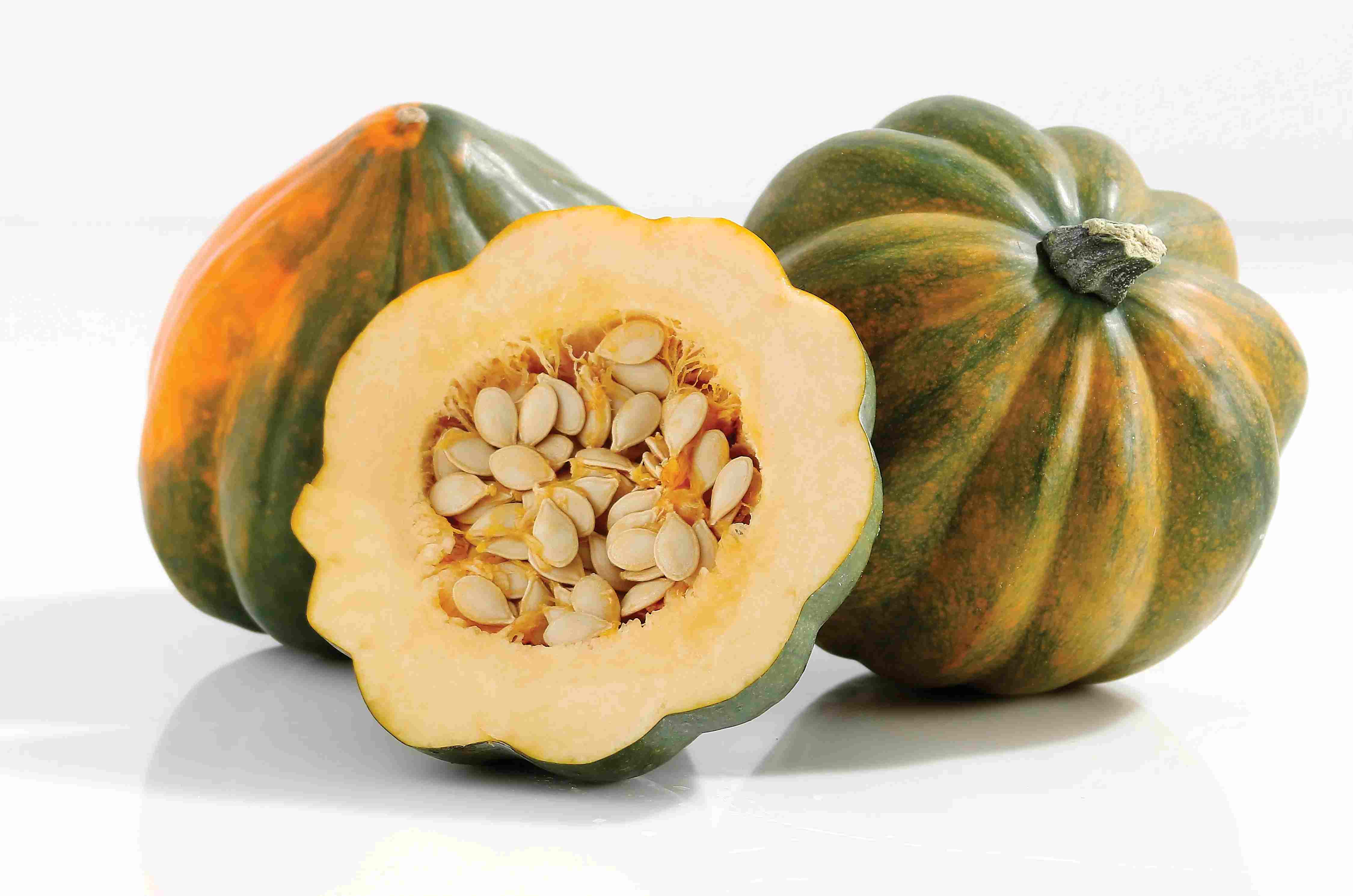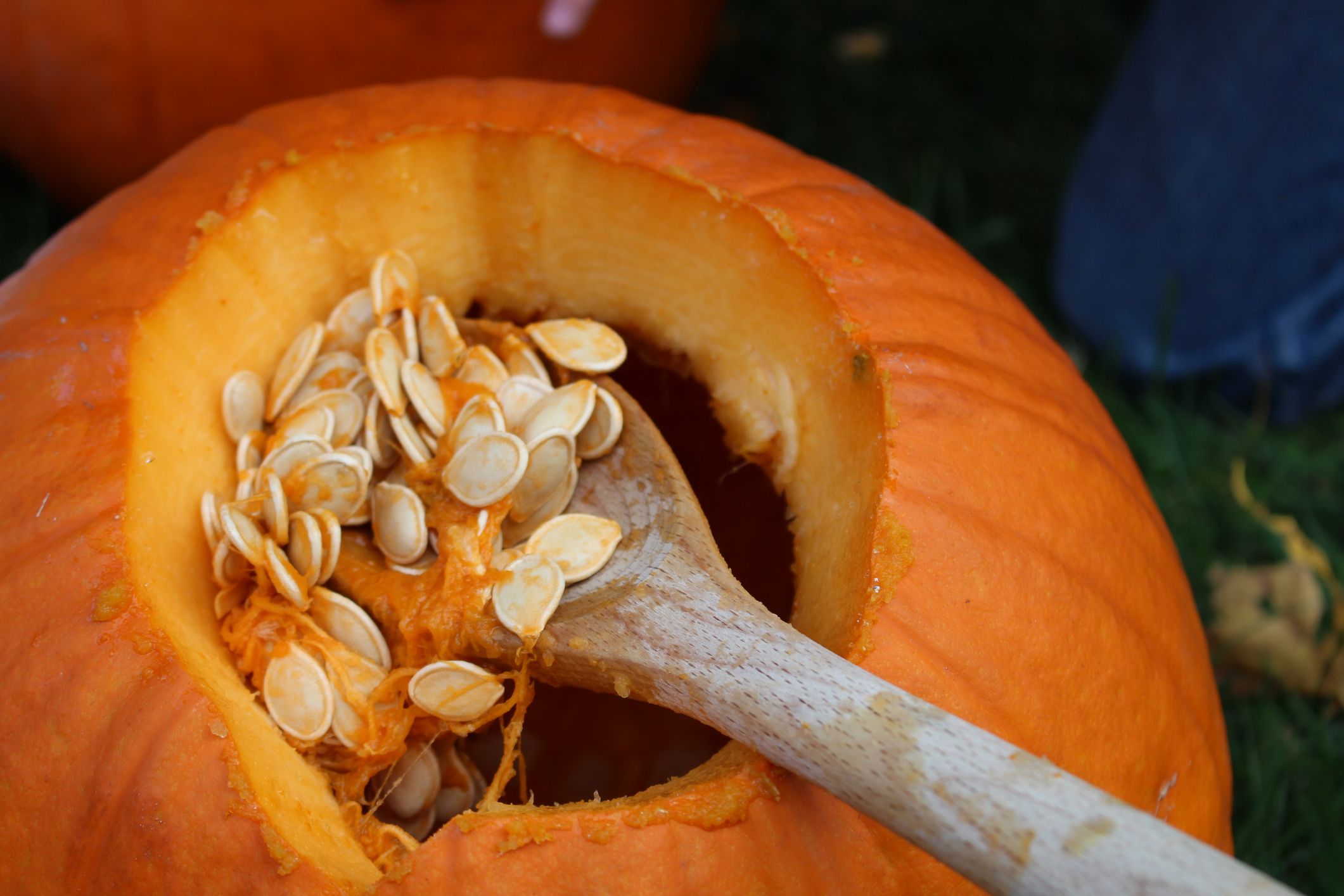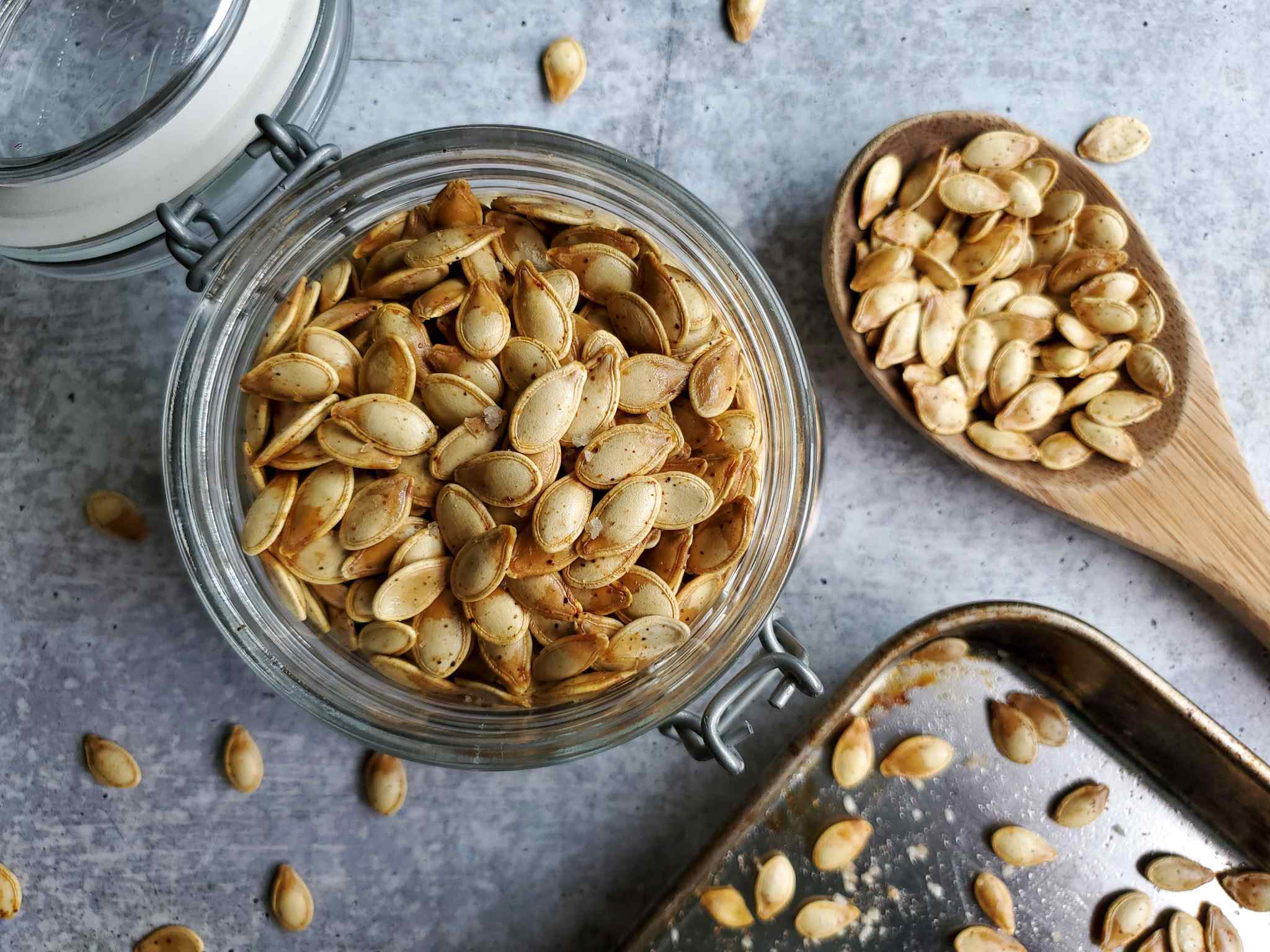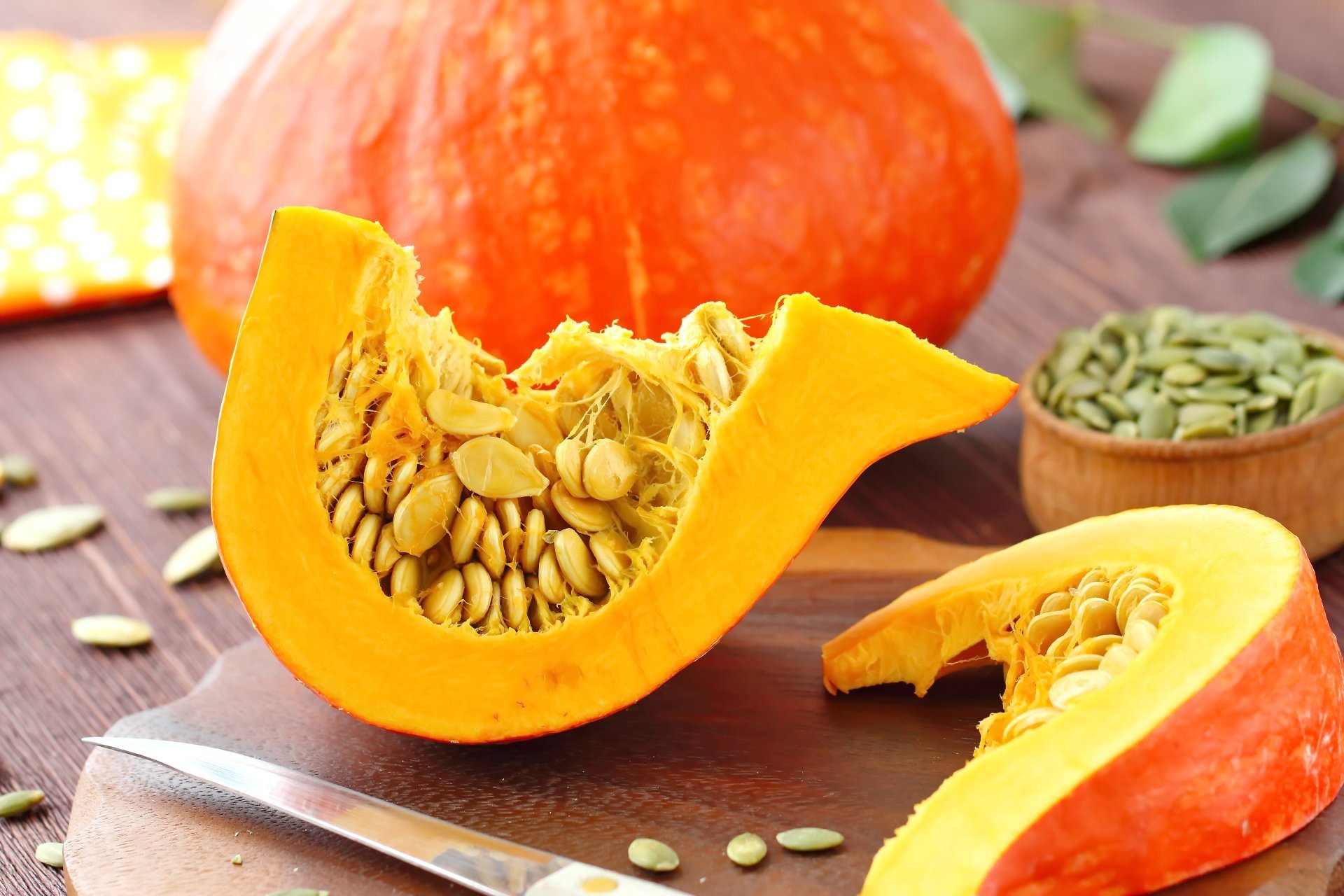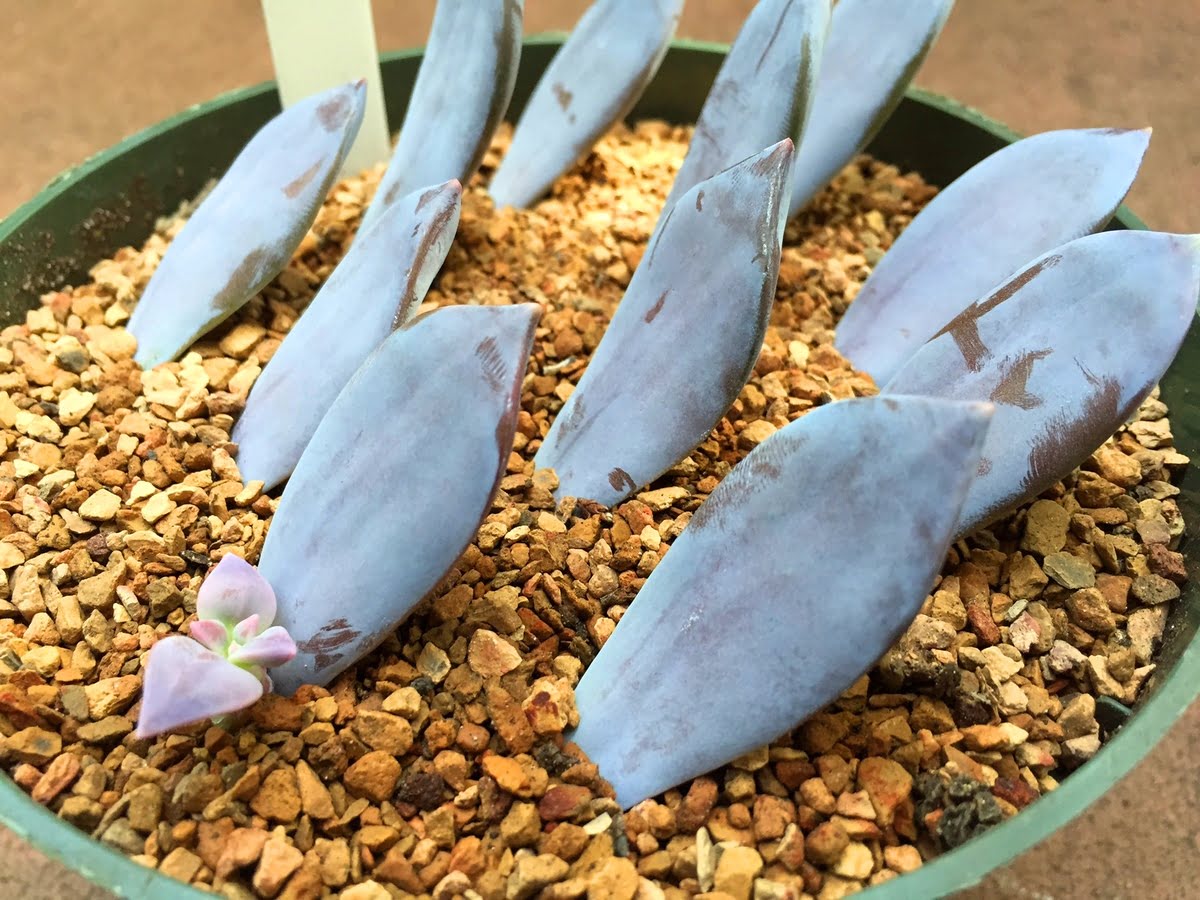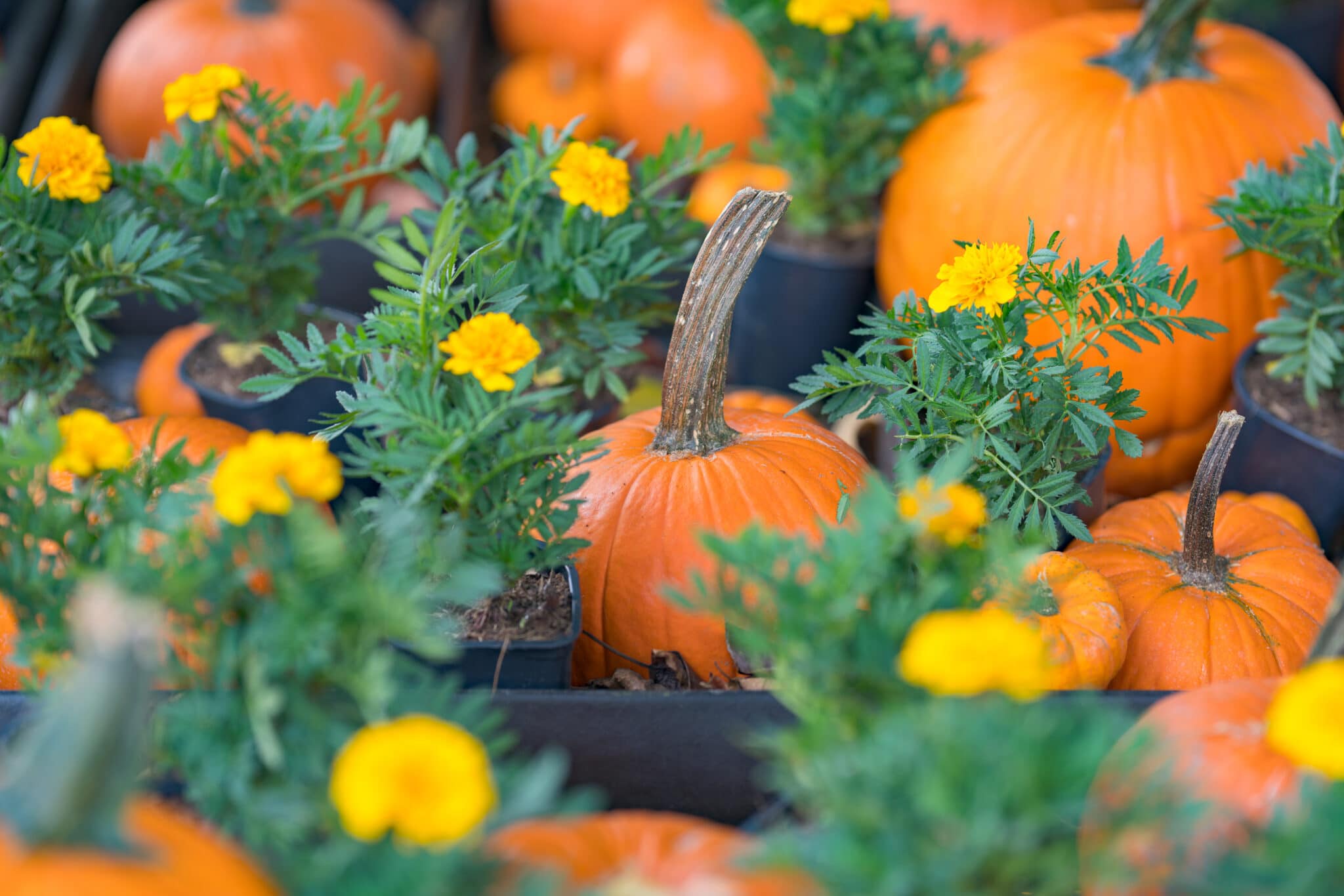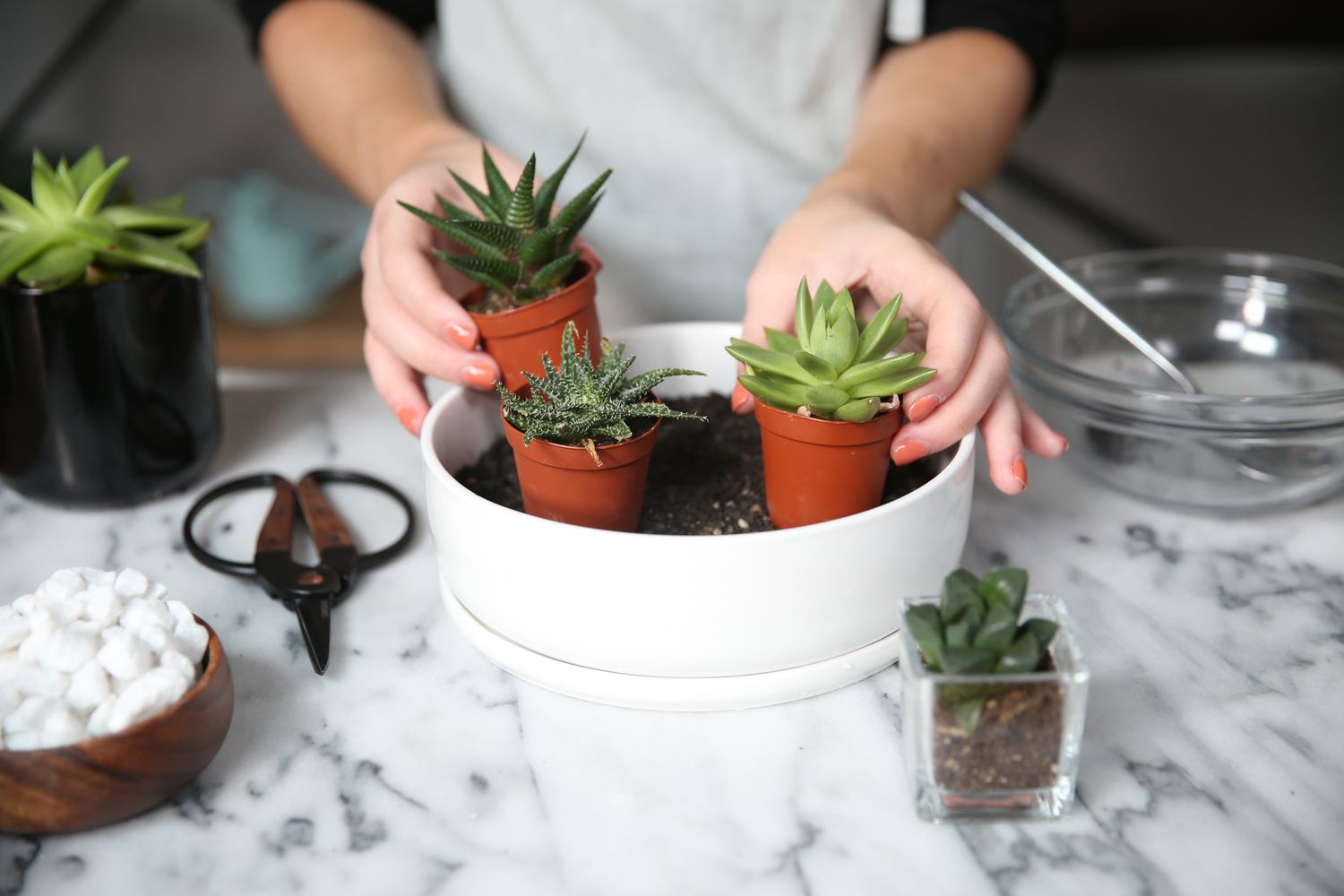Home>Types of Gardening>Ornamental Gardening>How To Plant Succulents In A Pumpkin
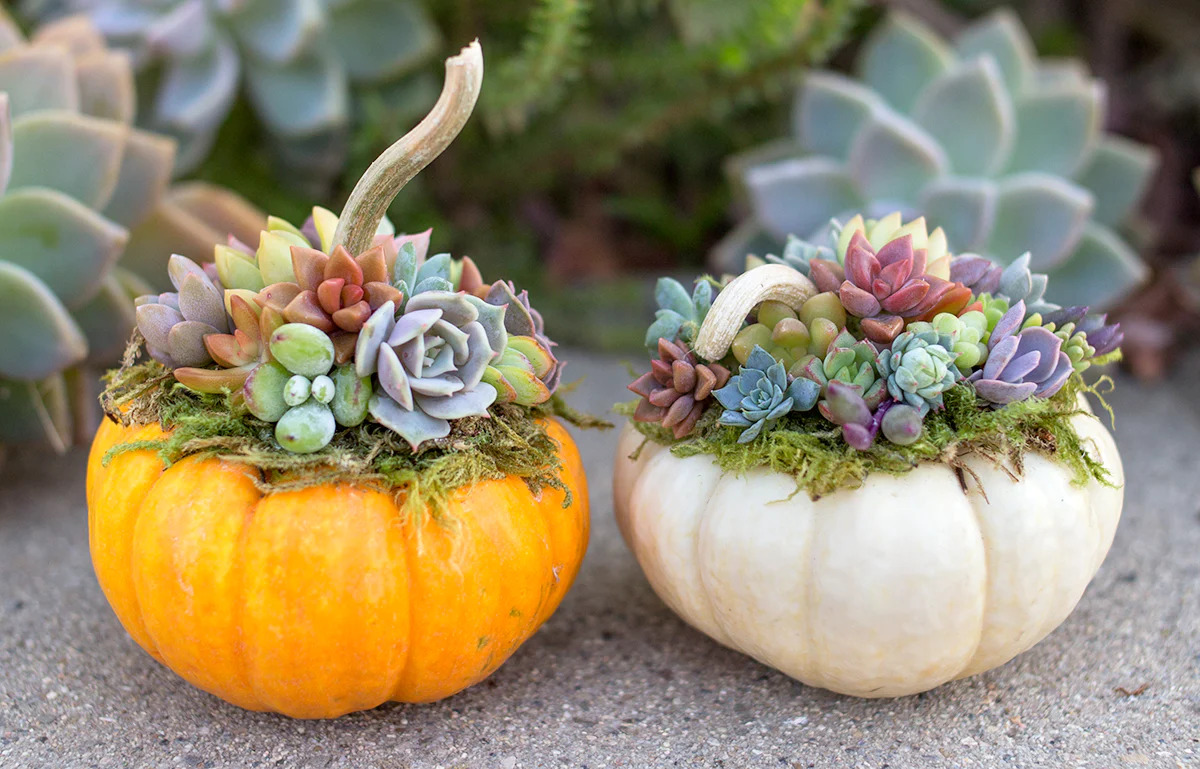

Ornamental Gardening
How To Plant Succulents In A Pumpkin
Modified: January 22, 2024
Learn the art of ornamental gardening with this step-by-step guide on how to plant succulents in a pumpkin. Create a unique and beautiful centerpiece for your fall decor.
(Many of the links in this article redirect to a specific reviewed product. Your purchase of these products through affiliate links helps to generate commission for Chicagolandgardening.com, at no extra cost. Learn more)
Table of Contents
Introduction
Welcome to the wonderful world of ornamental gardening! If you’re looking to add a touch of charm and whimsy to your garden or outdoor space, then planting succulents in a pumpkin is a creative and eye-catching option to consider. Not only does this unique planting idea bring together the beauty of succulents with the rustic charm of pumpkins, but it also adds a seasonal flair to your ornamental garden.
Planting succulents in a pumpkin is a popular trend among gardening enthusiasts and is a fun project that can be enjoyed by both beginners and experienced gardeners alike. It offers a great way to incorporate the vibrant colors and diverse textures of succulents into your garden or outdoor decor, while also providing a unique focal point that captures the spirit of the autumn season.
In this article, we will guide you through the process of planting succulents in a pumpkin, from choosing the right pumpkin to caring for your succulents once they are planted. We’ll also provide some helpful tips and ideas to inspire your creativity and create stunning succulent pumpkin arrangements.
So, grab your gardening tools, put on your creative hat, and let’s dive into the world of succulents and pumpkins!
Choosing the Right Pumpkin
When it comes to planting succulents in a pumpkin, selecting the right pumpkin is crucial for the success and longevity of your arrangement. Here are a few factors to consider when choosing the perfect pumpkin:
- Size: Look for a pumpkin that is large enough to accommodate your chosen succulents and provide ample space for growth. However, keep in mind that overly large pumpkins can be heavy and may become difficult to handle.
- Shape: Opt for a pumpkin with a flat or slightly concave top. This will provide a stable surface for planting the succulents and ensure that they receive adequate sunlight and water.
- Firmness: Gently press on the pumpkin’s skin to ensure that it is firm and free from any soft spots or signs of decay. A healthy, firm pumpkin will provide a sturdy foundation for your succulents.
- Color: The color of the pumpkin can vary from vibrant oranges and yellows to pale creams and whites. Choose a color that complements your succulents and enhances the overall aesthetic appeal of your arrangement.
Additionally, consider the lifespan of the pumpkin. Some pumpkins may have a longer shelf life than others, which means your succulent arrangement will last longer too. Look for varieties such as “Cinderella” or “Fairytale” pumpkins, which are known for their longevity.
Remember, the key is to choose a pumpkin that provides a sturdy and visually appealing base for your succulents. With the right pumpkin, you’re well on your way to creating a stunning and long-lasting succulent pumpkin arrangement!
Preparing the Pumpkin
Before you can start planting your succulents in the pumpkin, it’s important to properly prepare the pumpkin to ensure the best conditions for your plants. Here are the steps to prepare the pumpkin:
- Clean the pumpkin: Start by thoroughly cleaning the outside of the pumpkin using a damp cloth or sponge. This will remove any dirt or debris and provide a clean surface for your arrangement.
- Sanitize the pumpkin: To prevent the growth of bacteria or fungi, sanitize the pumpkin by wiping it down with a solution of one part bleach to ten parts water. This will help to prolong the lifespan of your succulent arrangement.
- Remove the top: Carefully cut off the top of the pumpkin using a sharp knife or pumpkin carving tool. This will create an opening for planting the succulents and allow for proper airflow and drainage.
- Scoop out the seeds and pulp: Use a spoon or scoop to remove the seeds and pulp from the inside of the pumpkin. Take your time to ensure that the pumpkin is clean and free from any residual pulp or seeds.
- Thin the walls: If the walls of the pumpkin are thick, consider thinning them out slightly using a spoon or scoop. This will provide more space for the succulent roots to grow and allow for better drainage.
Once you have prepared the pumpkin, it’s important to let it dry for a few hours or overnight. This will help to prevent excess moisture from building up and promote better plant health.
By taking the time to properly prepare the pumpkin, you are creating an optimal environment for your succulents to thrive. Now that the pumpkin is ready, it’s time to move on to selecting the ideal succulents for your arrangement.
Selecting the Ideal Succulents
Choosing the right succulents for your pumpkin arrangement is crucial to ensure a visually appealing and harmonious composition. Here are some factors to consider when selecting the ideal succulents:
- Size: Take into account the size of your pumpkin and choose succulents that are proportionate to it. For larger pumpkins, opt for a mix of larger and smaller succulents to create a dynamic and balanced arrangement.
- Growth habit: Consider the growth habits of different succulent varieties. Some succulents grow tall and upright, while others spread and trail. Select a combination of succulents that will complement each other and fill out the pumpkin nicely.
- Color and texture: Succulents come in a wide range of colors, from vibrant greens to deep purples and bright pinks. Choose a color palette that complements the pumpkin and creates an aesthetically pleasing contrast. Additionally, consider the textures of the succulents and mix smooth leaves with spikier or textured varieties for added visual interest.
- Drought tolerance: Since succulents are known for their ability to thrive in arid conditions, it’s important to select varieties that are drought-tolerant. This will ensure that your succulents can withstand the drier environment inside the pumpkin and require minimal watering.
- Compatibility: Different succulents have different light and water requirements. Make sure to choose succulents that have similar care needs to ensure they thrive together in your pumpkin arrangement.
Consider succulent varieties such as echeverias, sedums, and haworthias, as they are often popular choices for pumpkin plantings due to their striking colors, unique textures, and compact growth habits.
Ultimately, the ideal succulents will depend on your personal preferences and the overall aesthetic you want to achieve. Feel free to get creative and experiment with different combinations to create a one-of-a-kind succulent pumpkin arrangement!
Prepping the Succulents
Before you can plant the succulents in the pumpkin, it’s important to properly prep them to ensure they have the best chance of thriving in their new home. Here are some steps to follow when prepping the succulents:
- Inspect the succulents: Take a close look at your succulents and remove any dead or decaying leaves. Trim any long or leggy stems to encourage a more compact and bushy growth habit.
- Allow the succulents to dry: Succulents prefer well-draining soil and do not thrive in overly wet conditions. To promote better root growth, allow the succulents to dry for a few days before planting them in the pumpkin. This will help prevent rot and fungal diseases.
- Prepare the rooting hormone: If desired, you can use a rooting hormone to stimulate root growth in the succulents. Follow the instructions on the packaging to properly mix and apply the rooting hormone to the base of each succulent.
- Let the rooting hormone dry: After applying the rooting hormone, allow it to dry for a few minutes before planting the succulents in the pumpkin. This will prevent any potential damage to the roots or the pumpkin itself.
By prepping the succulents before planting, you are ensuring that they are in optimal condition to establish themselves in the pumpkin and promote healthy growth. Now that the succulents are ready, it’s time to move on to creating drainage holes in the pumpkin.
Creating Drainage Holes
Proper drainage is essential for the health of your succulents when planting them in a pumpkin. Here’s how you can create drainage holes:
- Choose the right tools: You’ll need a drill with a small drill bit or a sharp knife to create drainage holes in the bottom of the pumpkin. The size of the holes should be small enough to allow water to drain out but not so large that the soil will escape.
- Mark the hole locations: Flip the pumpkin upside down and mark the areas where you want to drill or cut the drainage holes. Aim for evenly spaced holes to ensure adequate water drainage throughout the pumpkin.
- Drill or cut the holes: Using the drill or knife, carefully create holes in the marked areas. If using a drill, start slowly and gradually increase the speed to prevent the pumpkin from cracking. Alternatively, if using a knife, gently make small cuts until the holes are formed.
- Remove any excess material: After creating the drainage holes, check for any loose or excess pumpkin flesh that may block the holes. Use a spoon or scoop to remove any obstructing material, ensuring that the drainage holes are clear and unobstructed.
Creating proper drainage holes will allow excess water to escape from the pumpkin, preventing the succulents from sitting in overly saturated soil and potentially developing root rot. This step is crucial to ensure the long-term health and survival of your succulents.
With the drainage holes in place, it’s time to move on to adding soil to the pumpkin in preparation for planting the succulents.
Adding Soil to the Pumpkin
Now that you’ve prepared the pumpkin and created drainage holes, it’s time to add soil to provide a suitable growing medium for your succulents. Follow these steps to add soil to the pumpkin:
- Select the right soil: Choose a well-draining succulent or cactus soil mix that is light and porous. Avoid using heavy garden soil or potting mixes that retain too much moisture, as this can lead to root rot.
- Fill the pumpkin with soil: Start by adding a layer of soil to the bottom of the pumpkin, ensuring that it covers the drainage holes. Gradually fill up the pumpkin with soil, leaving enough space to accommodate the succulent roots.
- Press down gently: Lightly press down on the soil to create a firm but not compacted surface. This will provide stability for the succulents and anchor their roots securely.
- Leave some space: Remember to leave a small space at the top of the pumpkin, as this will prevent soil from overflowing when watering and allow for adequate airflow.
When adding soil to the pumpkin, it’s important not to fill it up completely. Succulents prefer a well-draining environment, and leaving some room for airflow will help prevent excess moisture buildup and ensure the health of your plants.
Now that the pumpkin is filled with soil, it’s time for the exciting part – planting the succulents in the pumpkin!
Planting Succulents in the Pumpkin
With the pumpkin prepared and soil added, it’s time to plant your succulents and bring your pumpkin arrangement to life. Follow these steps for planting succulents in the pumpkin:
- Arrange the succulents: Before planting, take a moment to plan out the arrangement of your succulents. Consider the size, color, and growth habit of each succulent to create a visually appealing composition.
- Make holes in the soil: Use your finger or a small tool to create planting holes in the soil. Make sure the holes are deep enough to accommodate the roots of the succulents without overcrowding.
- Plant the succulents: Carefully remove each succulent from its container, gently loosen the roots, and place it into a planting hole. Press the soil around the succulent to secure it in place, ensuring that the base of the plant is level with the soil surface.
- Continue planting: Repeat the process for each succulent, spacing them out evenly and nestling them into the soil. You can experiment with different succulent varieties and combinations to create a visually stunning arrangement.
- Give them a gentle watering: After planting, give the succulents a light watering to settle the soil and help the roots establish. Avoid overwatering, as this can lead to root rot. Succulents prefer dry conditions, so water sparingly and only when the soil is completely dry.
It’s important to note that succulents planted in a pumpkin may require less water compared to those planted in traditional containers or garden beds. This is because the pumpkin’s walls can help retain moisture, and overwatering can lead to root issues.
With your succulents planted, step back and admire your handiwork. You’ve created a unique and beautiful succulent pumpkin arrangement that will undoubtedly be a stunning addition to your garden or outdoor space.
Caring for Succulents in a Pumpkin
Now that your succulents are planted in the pumpkin, it’s important to provide them with proper care to ensure their health and longevity. Here are some essential tips for caring for succulents in a pumpkin:
- Water sparingly: Succulents are known for their ability to store water in their leaves, stems, and roots. As a result, they are adapted to survive in arid environments. Water your succulents in the pumpkin sparingly, allowing the soil to dry out completely between watering. Overwatering can lead to root rot and other issues.
- Monitor light exposure: Place the succulent pumpkin in a location that provides the appropriate amount of light for your succulent varieties. Most succulents prefer bright, indirect light, while some can tolerate full sun. Avoid placing the pumpkin in direct sunlight for extended periods, as it can cause sunburn on the leaves.
- Provide good airflow: Proper airflow is essential for the health of succulents. Ensure that the pumpkin is kept in a well-ventilated area to prevent the buildup of moisture and reduce the risk of fungal diseases.
- Protect from extreme temperatures: While succulents are generally hardy plants, they can be sensitive to extreme temperatures. If the weather turns very hot or cold, consider moving the succulent pumpkin indoors or providing some protection to prevent damage to the plants.
- Prune as needed: Regularly inspect your succulents for any dead, damaged, or overgrown leaves or stems. Use clean, sharp pruning shears to carefully remove any unwanted growth. Pruning not only helps maintain the shape and appearance of the plants but also promotes better airflow and reduces the risk of pests and diseases.
In addition to these care tips, it’s important to remember that succulents growing in a pumpkin may have a limited lifespan compared to those planted in the ground or traditional planters. However, with proper care, you can enjoy your succulent pumpkin arrangement for several weeks or even months.
Keep a close eye on your succulents, observing any changes in growth or appearance. If you notice signs of stress or decline, such as wilting or discoloration, adjust your care routine accordingly to address any potential issues.
By providing the right care, your succulents will thrive in the pumpkin and continue to bring beauty and enjoyment to your ornamental garden or outdoor space.
Tips for Succulent Pumpkin Arrangements
Creating succulent pumpkin arrangements is not only a fun and unique gardening project but also an opportunity to let your creativity shine. Here are some tips to enhance and elevate your succulent pumpkin arrangements:
- Choose a variety of succulents: Mix and match different succulent varieties with varying colors, textures, and sizes to create a visually appealing and dynamic arrangement. Consider combining rosette-shaped succulents with trailing varieties for added interest.
- Use decorative elements: Enhance the beauty of your succulent pumpkin arrangement by incorporating other decorative elements such as moss, rocks, small branches, or dried flowers. These additional elements can add depth and texture to the composition.
- Add seasonal accents: Embrace the spirit of the season by incorporating seasonal accents into your arrangement. Consider adding miniature pumpkins, pinecones, or colorful fall leaves to enhance the autumnal theme.
- Create a centerpiece: Use your succulent pumpkin arrangement as a centerpiece for your outdoor dining table or as a focal point in your garden. Surround it with other seasonal decorations or candles to create a captivating ambiance.
- Experiment with different pumpkin sizes and shapes: Don’t limit yourself to traditional round pumpkins. Explore different pumpkin varieties, such as knobby or elongated ones, to create unique and eye-catching arrangements. Different sizes and shapes can add visual interest and variety to your display.
- Consider using artificial pumpkins: If you want to enjoy your succulent pumpkin arrangement for an extended period or prefer a non-perishable option, opt for artificial pumpkins. They come in various sizes, colors, and textures, and provide a long-lasting base for your succulents.
- Change up the succulents for different seasons: As the seasons change, consider replacing the succulents with varieties that align with the colors and themes of the season. This allows you to enjoy a fresh and updated display throughout the year.
Remember to have fun and let your creative instincts guide you when creating succulent pumpkin arrangements. There are endless possibilities and combinations to explore, so don’t be afraid to experiment and discover your own unique style.
Whether you display your succulent pumpkin arrangements indoors or outdoors, they are sure to be a conversation starter and a stunning addition to your ornamental gardening collection.
Conclusion
Planting succulents in a pumpkin is a creative and beautiful way to bring the charm of ornamental gardening into your outdoor space. By following the steps outlined in this article, you can create stunning succulent pumpkin arrangements that add a touch of whimsy and seasonal flair to your garden.
From choosing the right pumpkin to prepping it, selecting the ideal succulents, and caring for them, every step is crucial to the success and longevity of your arrangement. Remember to provide proper drainage, water sparingly, give your succulents adequate light, and protect them from extreme temperatures.
Additionally, don’t be afraid to let your creativity shine by incorporating decorative elements, experimenting with different succulent varieties and pumpkin shapes, and changing up the display for different seasons. Succulent pumpkin arrangements can be a centerpiece on your outdoor table or a captivating focal point in your garden.
So, go ahead and embark on this fun and rewarding gardening project. With a little bit of care and creativity, you’ll have a stunning succulent pumpkin arrangement that brings joy and beauty to your ornamental garden.
